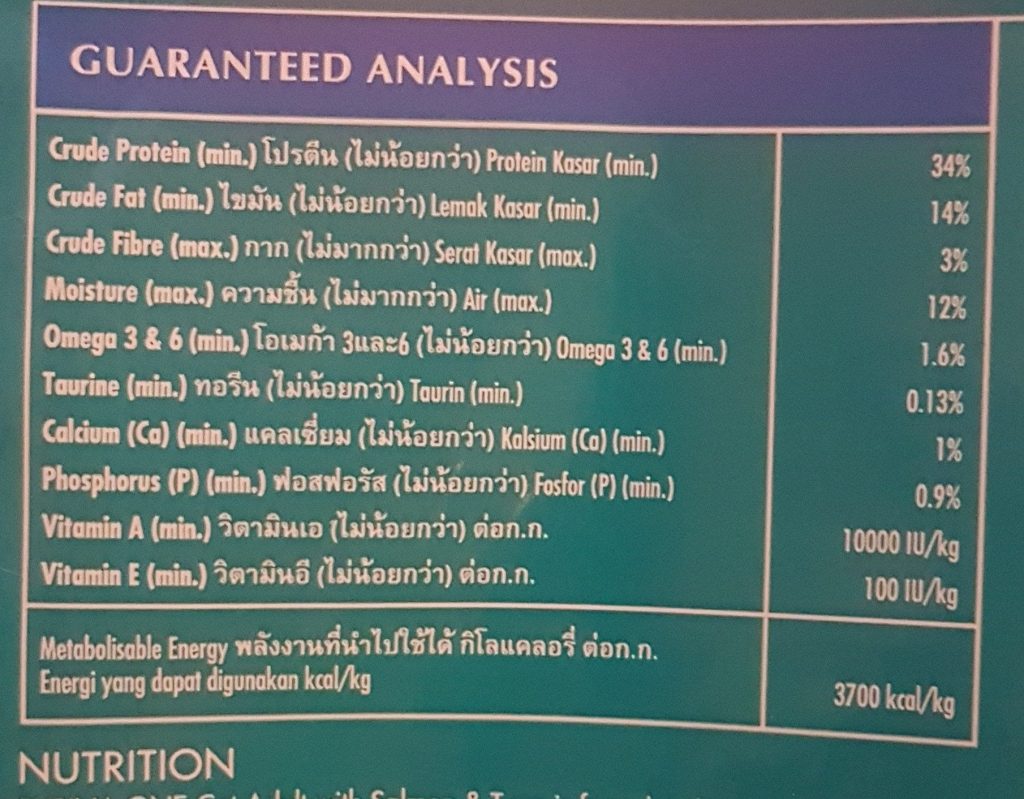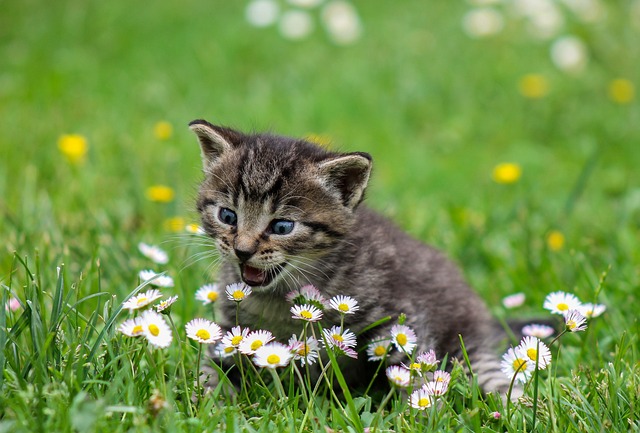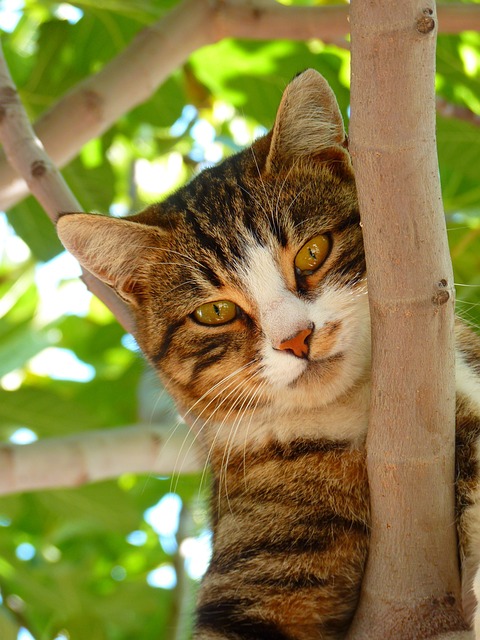Choosing the right food for your cat is crucial for their health and happiness. But deciphering cat food labels can be confusing, filled with technical jargon and marketing terms. Don’t worry, we’re here to help!
Understanding the Label on Cat Food :
First, let’s break down the key components of a cat food label:
- Guaranteed Analysis: This section lists percentages of protein, fat, fiber, moisture, and ash. Higher protein content generally indicates a richer source of essential nutrients for cats.
- Ingredients List: Read this carefully! Look for real meat sources listed first, and avoid foods with fillers like corn or soy. If your cat has allergies, watch out for potential allergens in the ingredients.
- Nutritional Adequacy Statements: Look for the AAFCO statement, which ensures the food meets all your cat’s nutritional needs.
The ingredients list reveals what’s in the food, listed in descending order by weight. Look for real meat sources like chicken or fish high on the list, as these provide essential protein. Avoid foods with fillers like corn, soy, or artificial additives, which offer little nutritional value. Don’t be intimidated by unfamiliar terms; research online or consult your vet for clarification.
Check the Guaranteed Analysis:
Labels display guaranteed analysis, listing percentages of protein, fat, fiber, moisture, and ash. Focus on high protein content, crucial for cats as obligate carnivores. Understand how to interpret these percentages and identify potential nutrient deficiencies if certain values seem too low.

The Role of Label Claims:
Marketing terms like “grain-free” or “natural” can be misleading. “Grain-free” doesn’t necessarily mean healthier, and “natural” has no regulated definition. Research these claims and understand their true meaning before making purchasing decisions based solely on them.
Choosing the Right Cat Food:
Consult your veterinarian for personalized dietary recommendations based on your cat’s age, health, and activity level. Consider their specific needs :
- Age and Life Stage: Kittens, adults, and seniors have different dietary needs. Choose an age-appropriate formula.
- Health Conditions: If your cat has specific health concerns, consult your veterinarian for personalized dietary recommendations.
- Wet vs. Dry Food: Each has its advantages. Wet food provides hydration, while dry food promotes dental health. Consider your cat’s preferences and consult your vet.
Tips for Savvy Cat Parents for Choosing the Best Cat Food
Here are some handy tips for choosing the best cat food:
- Read labels thoroughly: Pay close attention to the information we discussed.
- Talk to your vet: Seek guidance based on your cat’s unique needs and health.
- Introduce new food gradually: Avoid digestive upset by slowly transitioning your cat.
- Monitor your cat’s health: Watch for changes in weight, energy levels, and litter box habits.
- Red flags on labels: Look out for excessive fillers, artificial additives, and inadequate protein content.
Conclusion:
By understanding cat food labels and considering your cat’s individual needs, you can make informed choices that contribute to their long-term health and well-being. Remember, your cat’s health is in your paws!
FAQ about Cat Food:
- What do specific ingredients mean? Research online or consult your vet for detailed explanations.
- How do I handle picky eaters? Offer a variety of textures and flavors, and consult your vet for advice.
- What are marketing claims like “grain-free” all about? Do your research and understand the implications for your cat’s diet.
With this knowledge and these helpful tips, you’re well on your way to becoming a cat food decoding pro and ensuring your furry friend thrives on the best possible diet!






